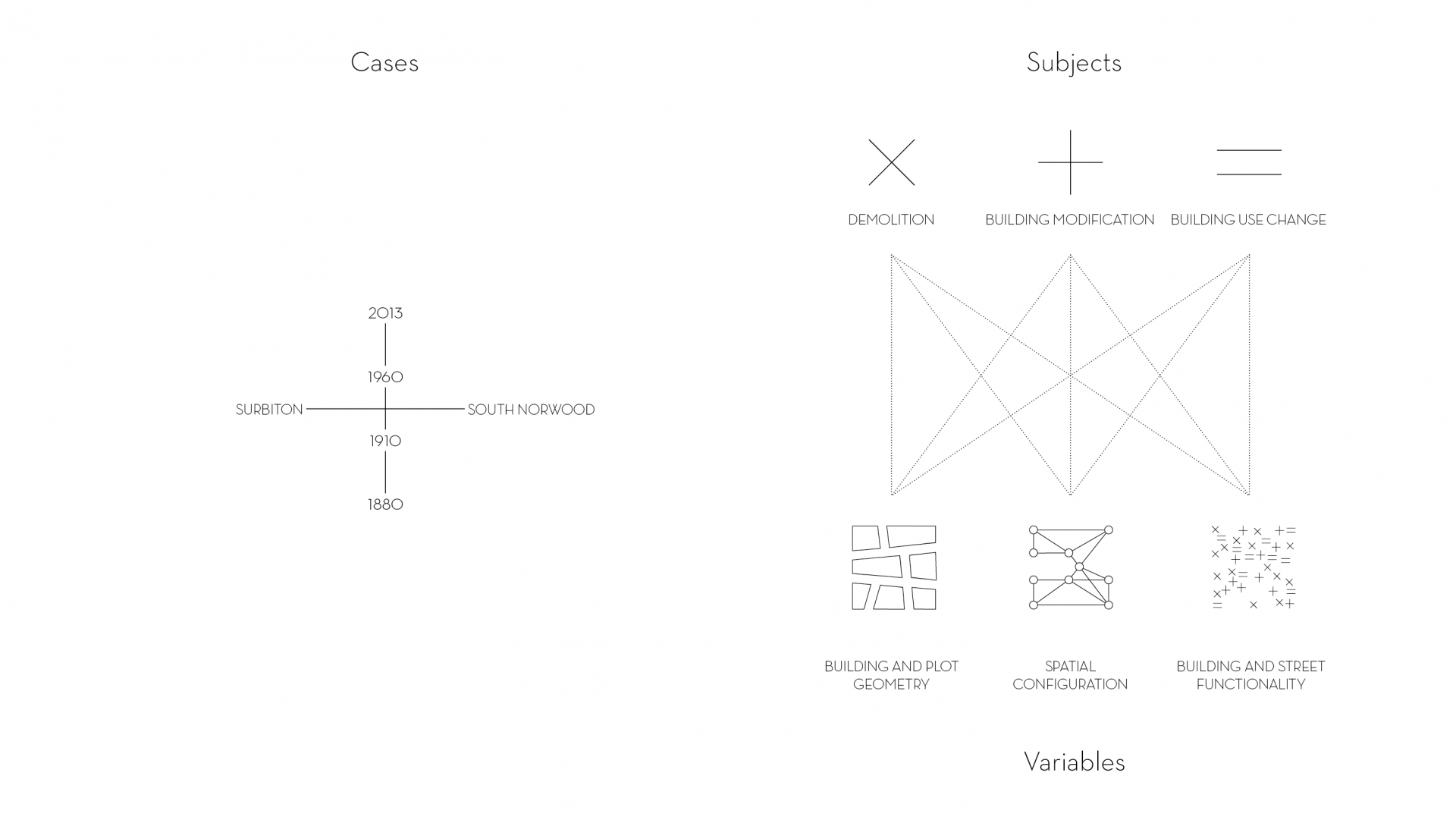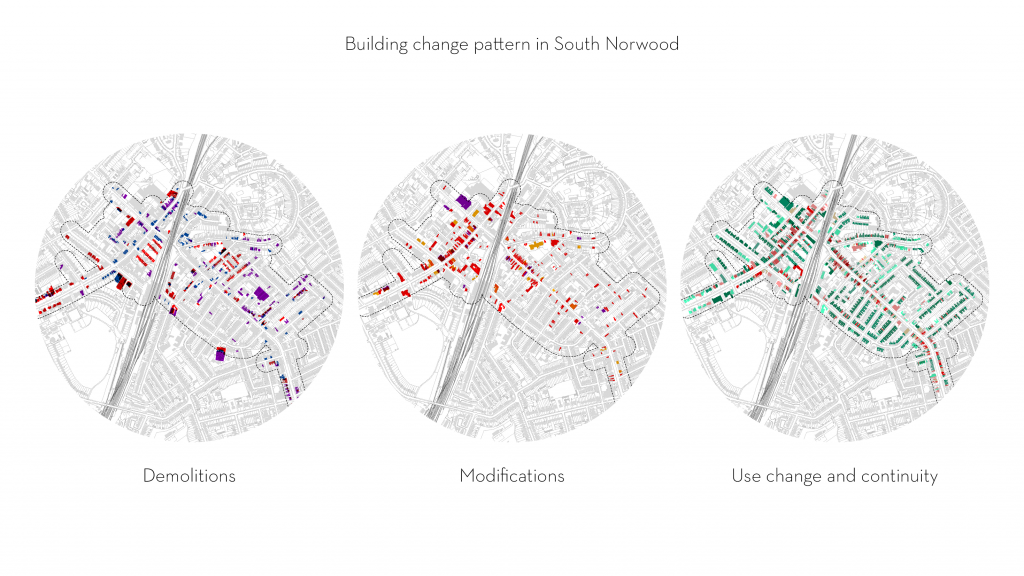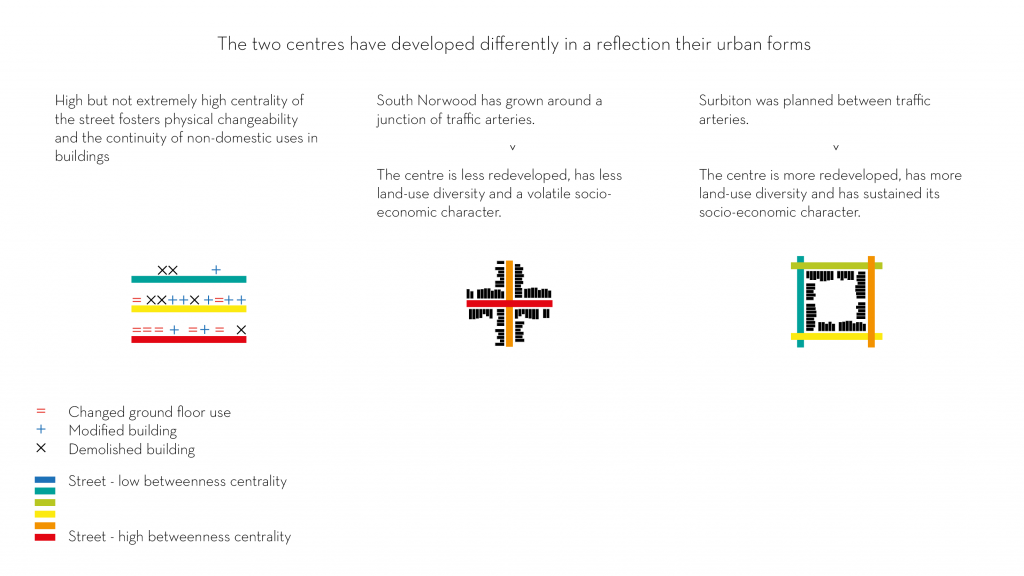High street changeability
What impact do high streets have on the change of their buildings?


Research, 2013-2017
UCL, The Bartlett, Space Syntax Laboratory, London.
The study explores the role of urban form – particularly the high street – in building adaptation. Adaptation is studied with mapping and spatial analysis of demolition, modification and use change in buildings. Its correspondence to urban form is explored by measures of spatial centrality of the street network, building and plot dimensions and building and street functionality. The study demonstrates how spatial and functional properties of the streets influence changes in the buildings in resilient 19th century suburban town centres in London. Certain urban forms are found to be more adaptable or robust than others. The study was published in Urban Morphology (see the paper in ResearchGate).
Two small urban centres in London are compared in four time periods between 1880 and 2013 in order to build a dynamic image of their adaptation as they grow and mature. The study combines the topological theory and analysis of space, space syntax, and the so-called Conzenian tradition of geometric and historical town plan analysis.




The study concludes that overall, the dimensions of buildings and plots influence demolition primarily. Spatial centrality and building and street functionality affect building use change most. Centrality, geometric dimensions and functionality affect building modifications. Buildings, however, adapt differently as the town centres experience various development stages. Typical of the initial stage is physically malleable high streets. The second stage is characterized by dispersed changes. The latest stage by consolidating high streets and clustered redevelopment.
The two centres studied, South Norwood and Surbiton are extrinsically similar, but are found out to be disparate morphological types. They have adapted dissimilarly to urban expansion. One adheres to arterial roads, the other is offset from arteries and highlights local connectivity. The study suggests that although high spatial centrality stimulates change in buildings, independence from arterial roads with high through traffic potential renders a small urban centre robust against the impacts of urban densification. It preserves the building stock in a more physically adaptive state and enabling longer continuity in building uses in the high streets: the generation of diversity.
In general, lower-level, changeability in buildings appears to contribute to the higher-level functional and social robustness of a centre: it stays in a state of continuing morphological transition and re-creates and maintains its potential for change. This vital source of self-sustainability is seems to be an essential ingredient of long-term urban viability.

